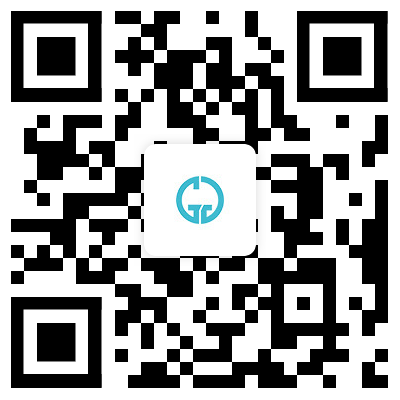 English
English-
 English
English -
 Español
Español -
 Português
Português -
 русский
русский -
 Français
Français -
 日本語
日本語 -
 Deutsch
Deutsch -
 tiếng Việt
tiếng Việt -
 Italiano
Italiano -
 Nederlands
Nederlands -
 ภาษาไทย
ภาษาไทย -
 Polski
Polski -
 한국어
한국어 -
 Svenska
Svenska -
 magyar
magyar -
 Malay
Malay -
 বাংলা ভাষার
বাংলা ভাষার -
 Dansk
Dansk -
 Suomi
Suomi -
 हिन्दी
हिन्दी -
 Pilipino
Pilipino -
 Türkçe
Türkçe -
 Gaeilge
Gaeilge -
 العربية
العربية -
 Indonesia
Indonesia -
 Norsk
Norsk -
 تمل
تمل -
 český
český -
 ελληνικά
ελληνικά -
 український
український -
 Javanese
Javanese -
 فارسی
فارسی -
 தமிழ்
தமிழ் -
 తెలుగు
తెలుగు -
 नेपाली
नेपाली -
 Burmese
Burmese -
 български
български -
 ລາວ
ລາວ -
 Latine
Latine -
 Қазақша
Қазақша -
 Euskal
Euskal -
 Azərbaycan
Azərbaycan -
 Slovenský jazyk
Slovenský jazyk -
 Македонски
Македонски -
 Lietuvos
Lietuvos -
 Eesti Keel
Eesti Keel -
 Română
Română -
 Slovenski
Slovenski -
 मराठी
मराठी -
 Srpski језик
Srpski језик
Are there any maintenance requirements for a 3CCT LED ceiling light?
2024-11-22
What are the maintenance requirements for a 3CCT LED ceiling light?
LED Ceiling Light 3CCT is a low-maintenance lighting fixture. It is designed to have a long lifespan and rarely requires maintenance. However, regular cleaning is recommended to keep the light in good condition. The cleaning process is straightforward and can be done with a soft cloth, some water, and a mild detergent. Do not use harsh chemicals or abrasive materials to clean the light as they may cause damage to the surface of the fixture.
How often should I clean my 3CCT LED ceiling light?
It is recommended to clean your LED Ceiling Light 3CCT at least once a month, depending on the location and environment where the light is installed. If the light is installed in a dusty or humid environment, it may require more frequent cleaning.
Do I need to replace the LED bulbs in my 3CCT LED ceiling light?
The LED bulbs in LED Ceiling Light 3CCT are designed to last for a long time. They have a lifespan of up to 50,000 hours, which is equivalent to about 17 years of use if the light is used for an average of 8 hours per day. Therefore, there is no need to replace the LED bulbs in your 3CCT LED ceiling light.
How do I troubleshoot if my 3CCT LED ceiling light is not working?
If your LED Ceiling Light 3CCT is not working, the first step is to check if the light is properly connected to the power source. Make sure the power switch is turned on and the light is receiving electricity. If the light is still not working, try resetting the circuit breaker or changing the light bulb. If none of these methods work, it is recommended to contact a professional electrician for help.
In conclusion, LED Ceiling Light 3CCT is a low-maintenance lighting fixture that can be easily adjusted to different color temperatures. Regular cleaning is recommended to keep the light in good condition. The LED bulbs in LED Ceiling Light 3CCT are designed to last for a long time, so there is no need to replace them frequently. If the light is not working, it is recommended to troubleshoot the problem or contact a professional electrician.
Ningbo Guangji Lighting Technology Co., Ltd. is a company that specializes in LED lighting products. With years of experience and expertise in the industry, we offer a wide range of quality products and services to meet the needs of our customers. For more information about our company and products, please visit our website at https://www.760gj.com. If you have any questions or inquiries, please feel free to contact us at info@gj-light.com.
10 Scientific Papers About LED Lighting:
Bakir, M., Bezerra, F., Lobo, H., El-Hennawy, H., Macário, T., & Koshizuka, N. (2011). Optimal horticulture LED light units. Industrial Electronics (ISIE), 2011 IEEE International Symposium on, IEEE, 2526-2531.
Chou, C., Chen, W., Lin, Y., Wu, C., Lin, D., & Sun, C. (2006). Design and implementation of a novel LED headlamp with low power consumption for smart vehicles. Journal of Display Technology, 2(3), 242-246.
Grinberg, N., Rumyantsev, S., Karpov, V., & Rudyak, V. (2018). The study of radiation stability of LED when using for accelerated electron beam sterilization. IOP Conference Series: Earth and Environmental Science, 131(1), 012010.
Hao, R., Tian, Y., & Liu, J. (2014). An Application of Solar LED Lighting System. In Applied Mechanics and Materials (Vol. 513, pp. 689-692)
Kushner, B. J. (2016). Effects of blue light filters on the flicker photometric electroretinogram. Journal of Optometry, 9(4), 240-247.
Liu, J., & Gong, Y. (2012). A method and a system on decoding thermal imaging videos for intelligent lighting control of indoor LED lighting. Journal of Zhejiang University-SCIENCE C (Computers & Electronics), 13(10), 723-733.
Madrid, M. C., Ornelas, R. A., Garcia, E. B., & Hernandez, L. R. (2014). Design and development of a LED indicator for visual signaling with low energy consumption. IEEE Latin America Transactions, 12(1), 30-35.
Nemati, A., & Alavi, S. E. (2014). The investigation of quantum well intermixing (QWI) effects on InGaN/GaN MQW based LED structures under electron irradiation. Superlattices and Microstructures, 67, 241-251.
Wan, Z., Zhang, G., Mao, D., Wang, P., & Li, J. (2018). A new development trend of smart street lighting system in China. In IOP Conference Series: Materials Science and Engineering (Vol. 392, No. 4, p. 042029). IOP Publishing.
Xu, Q., Lu, J., Lin, H., He, H., & Zheng, Y. (2016). System design and implementation of the intelligent wireless LED lighting control. In Journal of Physics: Conference Series (Vol. 693, No. 1, p. 012004). IOP Publishing.
Zhang, K., Wenyi, W., Masuda, A., Tanaka, K., & Nakamura, S. (2017). Evaluation of blue light hazard from solid-state lighting devices. Light: Science & Applications, 6(7), e17017.




